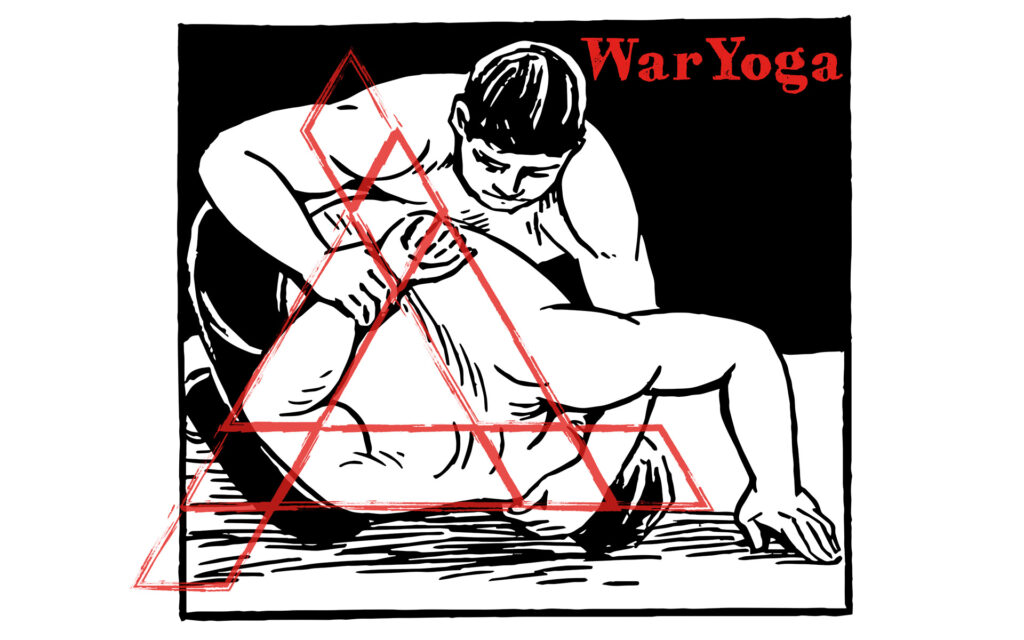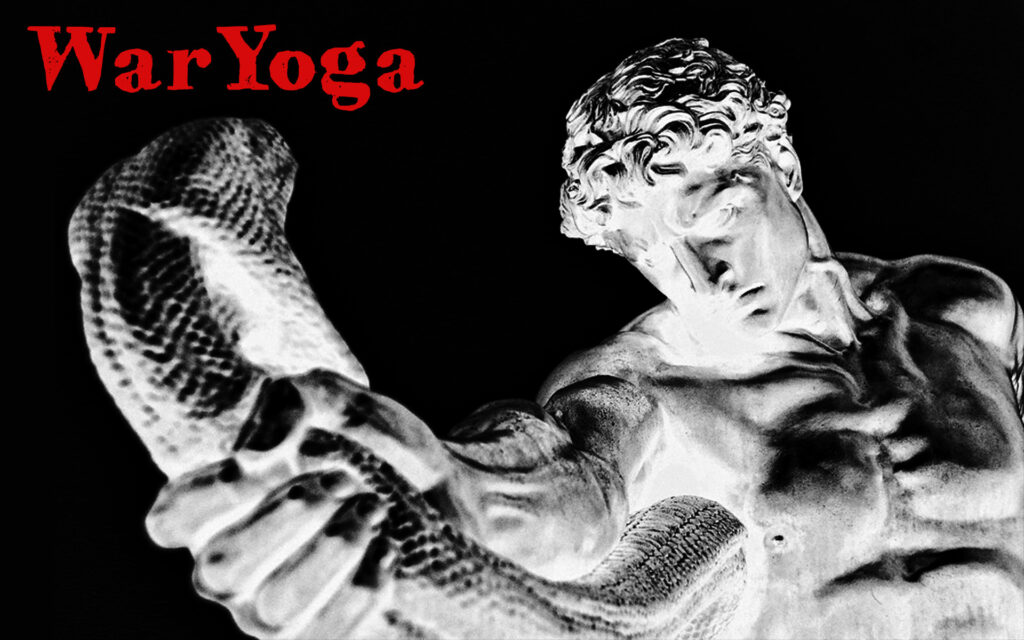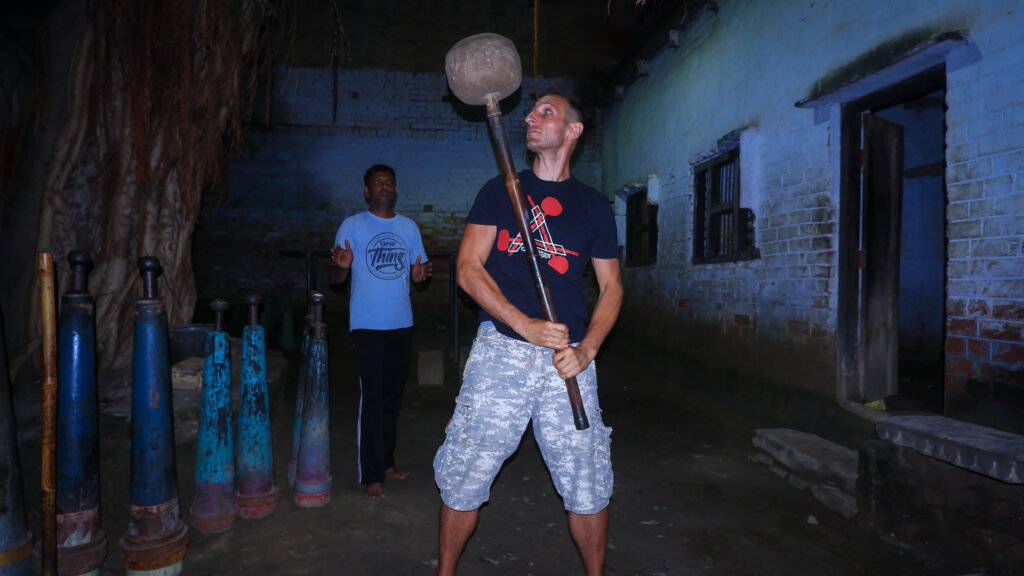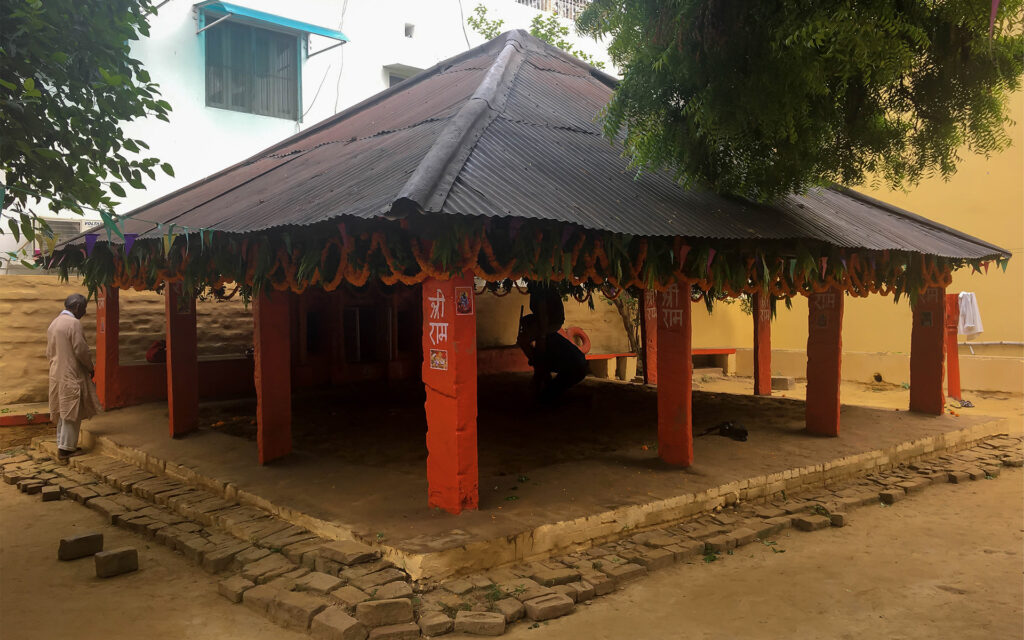
Grappling has always been an intrinsic part of WarYoga. The vyayam exercises come from Indian wrestling culture and the the name WarYoga has its origins in Jiu Jitsu.
While the WarYogin need not be a grappler, he must understand the roots of the physical practice which lie in Indian kushti wrestling. While the rhythmic exercises of grappling were once a pan-Indo-European phenomenon, Indian vyayam is one of the last living vestiges.
The exercises are designed to make a grappler stronger, more powerful, faster, more explosive and have greater endurance. They simulate movements used by grapplers, allowing muscle memory to do the work when the time to fight arrives.
The WarYogin performs the exercises with a single-mindedness. The highly regimented and structured vyayam element of his practice has a foil in the free-form grappling practice: “jor” in kushti, “rolling” in Jiu Jitsu parlance. This is where the flow state enacts the movements that have been implanted into the body through the systematic work.
It is during competition that grappling and WarYoga align the most. The spiritual practices of WarYoga, along with the exercises prepare the WarYogin for the physical and psychological rigours of facing one or more opponents who are seeking to defeat him. In practice, his teammates prepare the him with some give and take, allowing the WarYogin to work his game and perfect his craft. In competition, the WarYogin meets is given no quarter from those he squares off against. He gives none too. He stands alone. He represents his tradition and lineage, as well as his own unique story up to this point.
The name WarYoga also has its origins in grappling. To learn more, read the roots of WarYoga.
To get more from your WarYoga practice, get your copy of WarYoga by Tom Billinge and dive deep into this ancient Indo-European meta-physical tradition.



